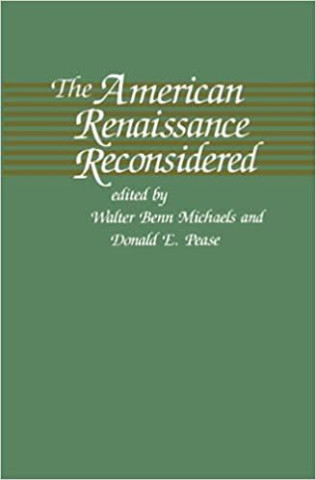The term American Renaissance designates a period in our nation's history when the literary "classics" appeared—works "original" enough to mark a beginning for America's literary history. But the American Renaissance, Donald Pease argues in his introduction, does not belong to the nation's secular history so much as it denotes a rebirth from it: "Independent of the time kept by secular history, the American Renaissance keeps what we could call global Renaissance time—the sacred time a nation claims to renew, when it claims its cultural place as a great nation existing within a world of great...
The term American Renaissance designates a period in our nation's history when the literary "classics" appeared—works "original" enough to mark a beginning for America's literary history. But the American Renaissance, Donald Pease argues in his introduction, does not belong to the nation's secular history so much as it denotes a rebirth from it: "Independent of the time kept by secular history, the American Renaissance keeps what we could call global Renaissance time—the sacred time a nation claims to renew, when it claims its cultural place as a great nation existing within a world of great nations. Providing each nation with the terms for cultural greatness denied to secular history, the 'renaissance' is not an occasion occurring within any specific historical time or place so much as it is a moment of cultural achievement that repeatedly demands to be reborn."
The American Renaissance Reconsidered examines this demand for rebirth in terms other than those ordained by the American Renaissance itself. In the seven pieces collected here it is reborn, not outside of, but within America's secular history, as the authors examine anew the period of the American Renaissance—and the period in which its history was written.
Contributing authors are Eric J. Sundquist, Jane P. Tompkins, Louis A. Renza, Jonathan Arac, Donald E. Pease, Walter Benn Michaels, and Allen Grossman.







